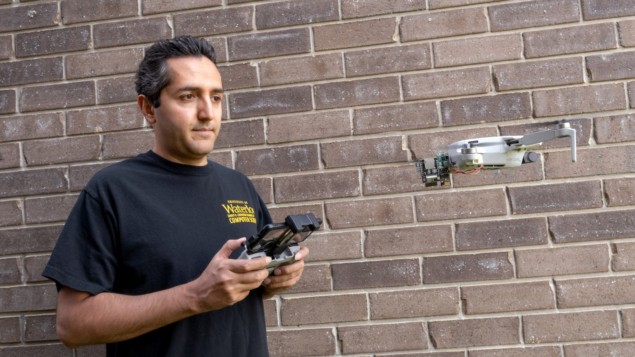
Don’t panic, but researchers in Canada have created a drone-based system that can see through walls and locate electronic devices such as mobile phones and laptops. Dubbed Wi-Peep, the system uses the fact that a WiFi-enabled device will respond to a “ping” from another WiFi-enabled device – even if the devices are not on the same network. This shortcoming is called the “polite WiFi loophole” and it was discovered by the Canadian team in 2020.
The idea is that Wi-Peep flies around outside of a building while pinging a device of interest. It then uses the time taken for it to receive the responses to triangulate the position of the device. The system was created by Ali Abedi and colleagues at the University of Waterloo, who say that it was built using a hobbyist drone and about $20 worth of commercially available components.
“On a fundamental level, we need to fix the polite WiFi loophole so that our devices do not respond to strangers,” implores Abedi. “We hope our work will inform the design of next-generation protocols.”
Until WiFi protocols are changed, Abedi is asking WiFi manufacturers to introduce a random delay when a device responds to a ping. This would render Wi-Peep and similar systems ineffectual, he says.
Wi-Peep is described in a paper that was presented at MobiCom ’22, which was held in Sydney, Australia last month.
Beautiful theories
With the World Cup in Qatar starting in just under two weeks, what better time than to look at the theory behind the “beautiful game”. In 2020, Andrés Chacoma of the Enrique Gaviola Institute of Physics, Argentina, and colleagues analysed teams on the attack and created a model to describe the dynamics of a football team passing the ball to each other, finding that most passages of play involve just two or three players.
Now they have turned their attention to the defending team and analysed tracking information taken during three professional football games. Using the data, they created a “bipartite” network, in which connections exist only between players on opposite teams. The researchers found that an attacking player was usually connected to two defending players, on average, with the size and duration of the “player clusters” obeying a power law. The research is described in Physical Review E.



